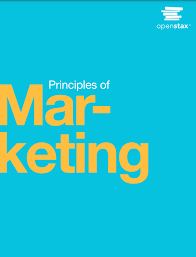Traditional Marketing: A Timeless Approach to Business Success
In today’s fast-paced digital age, it’s easy to get caught up in the hype surrounding online marketing strategies. While digital marketing undoubtedly plays a crucial role in reaching a wider audience, traditional marketing methods continue to hold their ground as effective and reliable approaches to promoting businesses.
Traditional marketing refers to the conventional methods of advertising and promotion that have been used for decades. These include print advertisements in newspapers and magazines, billboards, direct mail campaigns, radio and television commercials, and face-to-face interactions at events or trade shows. Despite the rise of digital platforms, traditional marketing techniques have proven their worth time and time again.
One of the key advantages of traditional marketing is its tangibility. Print advertisements, for instance, can be physically held and placed strategically where they are most likely to capture attention. Billboards along busy highways can create lasting impressions on commuters who see them daily. Traditional methods allow businesses to engage with potential customers on a physical level, establishing a sense of credibility and trust that may be lacking in purely digital interactions.
Another advantage of traditional marketing is its ability to target specific demographics effectively. By placing ads in niche publications or broadcasting commercials during specific television shows or radio programs, businesses can reach their desired audience directly. This targeted approach ensures that marketing efforts are not wasted on individuals who are unlikely to be interested in the product or service being offered.
Moreover, traditional marketing techniques often have a more personal touch compared to digital methods. Direct mail campaigns allow businesses to send personalized messages directly into people’s homes or offices. This physical interaction creates a deeper connection between the brand and the consumer. Similarly, face-to-face interactions at events or trade shows provide an opportunity for businesses to showcase their products or services while building relationships with potential customers.
It is important to note that traditional marketing should not be viewed as an either-or choice when compared with digital marketing strategies. Instead, both approaches can complement each other, forming a comprehensive marketing plan that maximizes reach and effectiveness.
In conclusion, traditional marketing methods continue to be relevant and effective in today’s digital landscape. Their tangibility, ability to target specific demographics, and personal touch make them invaluable tools for businesses seeking to connect with their target audience. By incorporating traditional marketing techniques into a well-rounded marketing strategy, businesses can increase their visibility, build trust with customers, and ultimately achieve long-term success.
Exploring the Essentials of Traditional Marketing: FAQs Answered
- Why is traditional marketing important?
- What is marketing traditional vs digital?
- What is traditional vs modern marketing?
- What are the 3 traditional marketing approaches?
Why is traditional marketing important?
Traditional marketing remains important for several reasons:
- Tangibility: Traditional marketing methods such as print advertisements, billboards, and direct mail campaigns provide a physical presence that can be seen, touched, and held. This tangibility creates a lasting impression on consumers and helps establish credibility and trust in the brand.
- Targeted Reach: Traditional marketing allows businesses to target specific demographics effectively. By placing ads in niche publications or broadcasting commercials during specific television shows or radio programs, businesses can reach their desired audience directly. This targeted approach ensures that marketing efforts are not wasted on individuals who are unlikely to be interested in the product or service being offered.
- Personal Connection: Traditional marketing techniques often have a more personal touch compared to digital methods. Direct mail campaigns allow businesses to send personalized messages directly into people’s homes or offices. Face-to-face interactions at events or trade shows provide an opportunity for businesses to showcase their products or services while building relationships with potential customers.
- Complementing Digital Efforts: Traditional marketing should not be viewed as an either-or choice when compared with digital marketing strategies. Instead, both approaches can complement each other, forming a comprehensive marketing plan that maximizes reach and effectiveness. By incorporating traditional marketing techniques into a well-rounded marketing strategy, businesses can increase their visibility and enhance their online efforts.
- Familiarity and Trust: Traditional marketing methods have been used for decades and have become familiar to consumers. Many people still rely on newspapers, magazines, television, and radio for information and entertainment. By utilizing traditional marketing channels, businesses can tap into this familiarity and build trust with customers who may be more receptive to traditional forms of advertising.
While digital marketing has its advantages in terms of cost-effectiveness, reach, and measurability, traditional marketing remains important due to its tangibility, targeted reach, personal connection, ability to complement digital efforts, and the familiarity it brings to consumers’ lives. A well-balanced marketing strategy that incorporates both traditional and digital methods can help businesses effectively engage with their target audience and achieve their marketing goals.
What is marketing traditional vs digital?
Traditional marketing and digital marketing are two distinct approaches to promoting products or services. Let’s explore the differences between the two:
Traditional Marketing:
Traditional marketing refers to the conventional methods of advertising and promotion that have been used for decades. It includes various offline channels such as print advertisements in newspapers and magazines, billboards, direct mail campaigns, radio and television commercials, flyers, brochures, and face-to-face interactions at events or trade shows. Traditional marketing relies on physical materials and interactions to convey messages to a target audience. It has a long-standing history and has proven its effectiveness over time.
Digital Marketing:
Digital marketing, on the other hand, leverages online platforms and technologies to reach a wider audience. It encompasses various online channels such as websites, search engine optimization (SEO), search engine marketing (SEM), social media marketing, email marketing, content marketing, influencer marketing, video advertising, and mobile advertising. Digital marketing utilizes digital content in the form of text, images, videos, or interactive elements to engage with potential customers across different online platforms.
Differences:
- Reach: Traditional marketing typically has a more localized reach since it relies on physical distribution channels like newspapers or billboards in specific areas. Digital marketing allows businesses to reach a global audience by leveraging internet connectivity.
- Cost: Traditional marketing often requires significant investments due to printing costs, media buying fees for TV or radio commercials, or physical materials production expenses. Digital marketing can be more cost-effective as it eliminates many of these production costs and offers flexible budgeting options.
- Targeting: Traditional marketing can target specific demographics through niche publications or broadcasting during certain TV shows but lacks the precision targeting capabilities of digital platforms. Digital marketing allows businesses to narrow down their target audience based on demographics, interests, behaviors, or even specific search queries.
- Interactivity: Traditional marketing is less interactive since it relies on one-way communication through static advertisements or broadcasts. Digital marketing, on the other hand, enables two-way communication through social media interactions, comments, live chats, and personalized email campaigns.
- Measurability: Traditional marketing can be challenging to measure accurately in terms of effectiveness and return on investment (ROI). Digital marketing provides detailed analytics and tracking tools that allow businesses to measure campaign performance, monitor website traffic, track conversions, and make data-driven decisions for optimization.
It’s important to note that both traditional marketing and digital marketing have their strengths and weaknesses. An effective marketing strategy often combines elements from both approaches to create a comprehensive and well-rounded plan that aligns with business goals and target audience preferences.
What is traditional vs modern marketing?
Traditional marketing and modern marketing are two distinct approaches to promoting products or services. Here are the key differences between the two:
Traditional Marketing:
Channels: Traditional marketing primarily utilizes offline channels such as print media (newspapers, magazines), broadcast media (television, radio), direct mail, billboards, and in-person interactions at events or trade shows.
Reach: Traditional marketing often targets a broader audience without specific targeting capabilities.
Tangibility: Traditional marketing materials are physical and can be held, seen, or heard directly by the audience.
Interaction: Traditional marketing relies on one-way communication where the message is delivered to the audience without immediate interaction or feedback.
Cost: Traditional marketing methods can be more expensive due to production costs associated with print ads, TV/radio commercials, and physical materials.
Modern Marketing:
Channels: Modern marketing predominantly utilizes online channels such as websites, social media platforms, email marketing, search engine optimization (SEO), content marketing, influencer collaborations, and mobile apps.
Reach: Modern marketing allows for precise targeting based on demographics, interests, behaviors, and other data points to reach a specific audience segment.
Interactivity: Modern marketing encourages two-way communication through comments sections on social media posts or websites, live chats with customer support representatives, or interactive quizzes/surveys to engage with the audience.
Measurement and Analytics: Modern marketing provides detailed metrics and analytics that enable businesses to track campaign performance in real-time and make data-driven decisions for optimization.
Cost-Effectiveness: Compared to traditional methods, modern marketing can be more cost-effective as online platforms often offer lower entry costs and allow for targeted budget allocation.
While traditional marketing has its strengths in terms of tangibility and broad reach among diverse audiences, modern marketing takes advantage of digital technologies to provide targeted messaging, interactivity with customers, real-time analytics for optimization purposes, and cost-effective options for businesses of all sizes. Ultimately, a well-rounded marketing strategy may combine elements from both traditional and modern approaches to maximize reach and effectiveness.
What are the 3 traditional marketing approaches?
The three traditional marketing approaches are:
- Print Advertising: This approach involves placing advertisements in newspapers, magazines, brochures, flyers, and other printed materials. It allows businesses to reach a wide audience and provides a tangible form of advertising that can be physically held and referred to repeatedly.
- Broadcast Advertising: This approach involves advertising through radio and television commercials. Businesses can target specific time slots or programs that align with their target audience’s interests. Broadcast advertising allows for creative storytelling and the use of audio-visual elements to capture viewers’ attention.
- Direct Mail Marketing: This approach involves sending promotional materials directly to individuals’ mailboxes. It includes brochures, catalogs, postcards, or letters tailored to specific recipients. Direct mail marketing allows for personalized messaging and can be highly targeted based on factors such as demographics or past purchasing behavior.
These traditional marketing approaches have been used for many years and have proven to be effective in reaching potential customers through different channels. While digital marketing has gained prominence in recent years, these traditional methods still hold value and can be integrated into a comprehensive marketing strategy for maximum impact.




